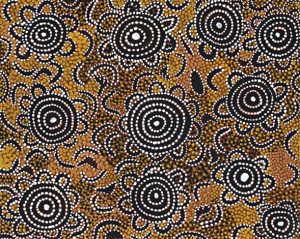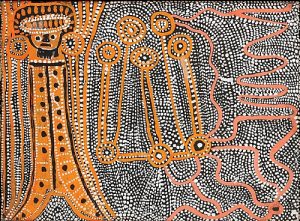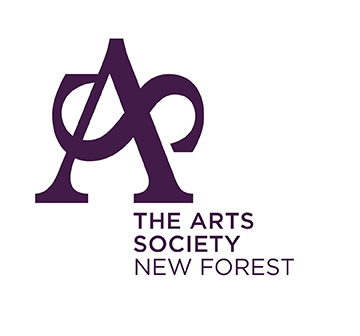Art Down Under :From the Convict Years to the Modern World : a lecture by Val Woodgate – March 2024
Val set the scene and getting us in the mood by showing us the sunshine of Australia.
She then took us back to the time when convicts were first sent to Australia. Captain Philips took the first ship full and had difficulty persuading the government to give him enough supplies for the long journey. The first group suffered 5 years of starvation and yet none of them were violent criminals – they had all been convicted of minor crimes – mainly theft of food. Very few of this first contingent came back.
The term for these early convicts was POMs as the main prison they were sent to was Millbank so they were Prisoners of Millbank – POMs
Early Artist Migrants
Val then took us to the next stage in the development of Australian Art – where the artists were still being influenced by European art of the time. This is very evident in the work of Conrad Martens as seen in his “View of Sidney from Rose Bay ” (1836). where Martens hasn’t really captured the true Australian light or trees and the painting looks very much like a Turner.
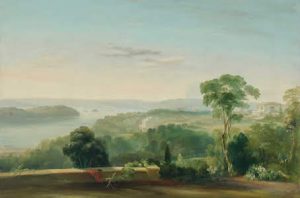
E.Fox was a painter who had studied at the Art School in Melbourne before going to Europe to study and the went back to Melbourne where he opened the first Australian Art School in the 1890s
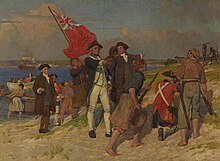
Fox was commissioned to paint a Picture of ‘Cook landing at Botany Bay” but it had to painted in London.
Their art at this time was not decorative but was more transforming the mundane into the spiritual. The land was associated with their beliefs.
Nerli (who had travelled to Australia from Italy ) had a great influence on art at the time and the Japanese influence was very evident with paintings stuffed with Japanese articles
By now there were quite a few settlements so the artists began painting settlements as Ford’s painting in 1875 of ‘Picnic at Hanging Rock ‘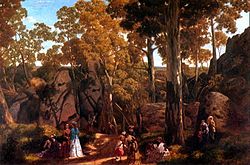
Australian Impressionism – influenced by Europe
This was the next stage in Australian art and featured work by Roberts, Abrahams and McCubbin.
Tom Roberts had gone to Australia with his mother when he was 13 and then came back the England to study art and then took impressionism back with him to Australia, as shown in his painting in 1886 ‘The Artist Camp”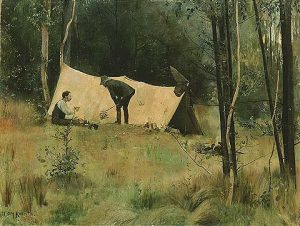 and Streeton’s ‘Australian Summer which shows the heat of summer, “I sit surrounded by copper and gold. ”
and Streeton’s ‘Australian Summer which shows the heat of summer, “I sit surrounded by copper and gold. ”
Post impressionist art in Australia was shown in work by artists including Grace Crossington Smith in her 1930 painting ‘The Bridge in Curve depicting the Sydney Harbour Bridge during its construction. The work is now considered one of Australia’s best modernist paintings, but was rejected from exhibition in 1930.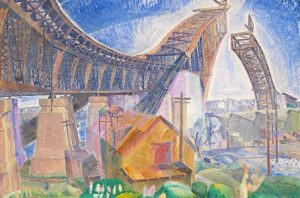
Aboriginal Art
Val closed her talk with aboriginal art showing us the work of Tjupurrulu -Untitled-which is painted in the original aboriginal style where the positioning of the shapes is as important as the shapes themselves. 